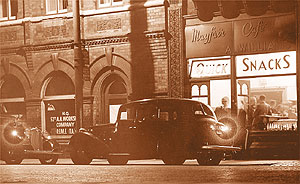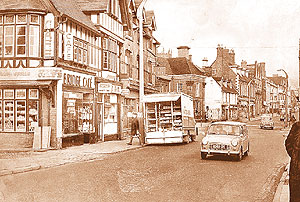![]()
Bold experiment pays off
|
The 1990s fashion for charters - citizens, rail passengers etc - may be said to have been pioneered in Dudley which produced its own "Children's Charter". One of its most striking successes was a case involving eight children who were adopted by their own parents after the family had seemingly broken up for good. When the mother left the kids came under the care of the local authority but they could not be kept together and found themselves scattered around the town. Fate intervened when the mother returned and a bold experiment was planned. Although their previous home was in a deplorable state it was decided to let both parents adopt their own children. Under supervision the family tried to shake off the apathy which had held them down , they re-decorated the house and bought furniture and paid off their debts. Although their home was grossly over-crowded they started to to be happy again. The social worker at the centre of the experiment, Miss B J Langbridge, told the Express & Star: "This experiment is only a beginning but it has already proved that sympathy, understanding and practical help can do more than anything else to save human beings from the scrap heap." On a more practical note Miss Langbnridge added: "If we had not taken this course it would have cost nearly 20 a week to keep the family in foster homes and institutions. "In the 18 months of this experiment more than 1,000 has been saved."
A light side to Stafford's nights: Night life in Stafford would never be quite the same again after September. Folk gathered around the newly erected concrete lamp standards in the main street as the 11,000 road lighting scheme was switched on for the first time. "There was a murmur of approval," reported the Express & Star, "as the mayor pressed a switch and lit up four-and-a-half miles of the road from the north to south boundaries of the town." The ceremony was performed at the Swan Hotel where highway committee chairman Councillor M B Schroeder said the lighting would be "a step towards reducing the number of road accidents." Civic guests then went on a tour of the newly illuminated road.
Luxury of television: In the post-war years, televisions were a luxury for the rich. As this 1950 Express & Star advert recalls, a modest set was a cool 47, at a time when an ordinary working man might earn no more than 5 a week. That's nearly ten week's wages for the chance of viewing for just a few hours per night. Even the 14s 6d (72p) weekly instalments on the "never-never" were more than some families were paying in house rent. Pamela in service with the princess: One of the youngsest members of of the staff of the then Princess Elizabeth at Clarence House in London was 19-year-old Pamela Crellin from Rock, near Kidderminster.Miss Crellin took a domestic science course in Birmingham and when she had completed her training she wrote to Princess Elizabeth to ask if she could work for. Such boldness often pays and it did for Miss Crellin who in September 1950 was installed as assistant cook at Clarence House. There were two other assistants in the royal household under the supervision of the chief cook, Mrs Barnes, and the housekepper, Mrs MacGregor. Miss Crellin wore the uniform of dark green which the princess chose for her staff - a tailored cotton dress without a cap. Her duties mainly involved staff cooking and helping out in the dining room.
|
|


